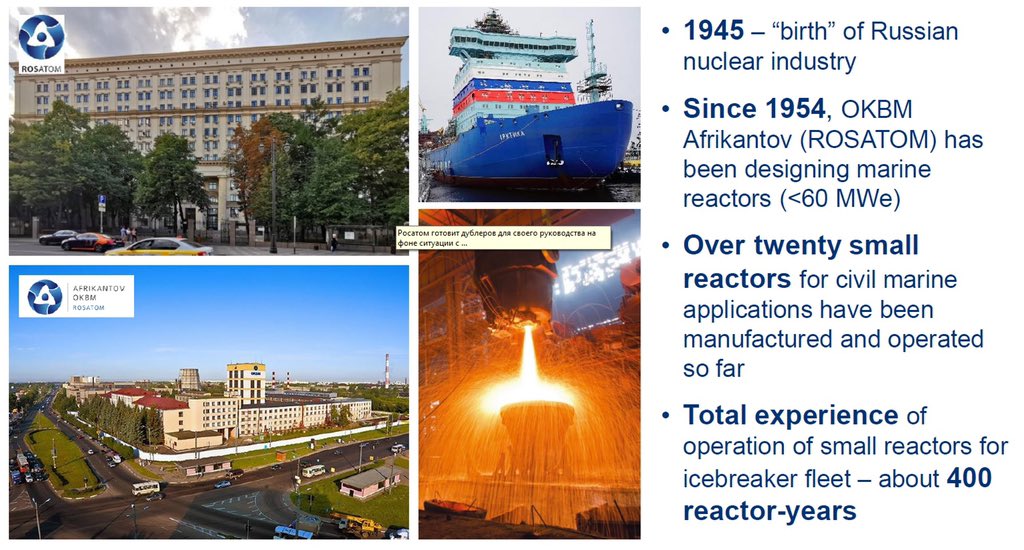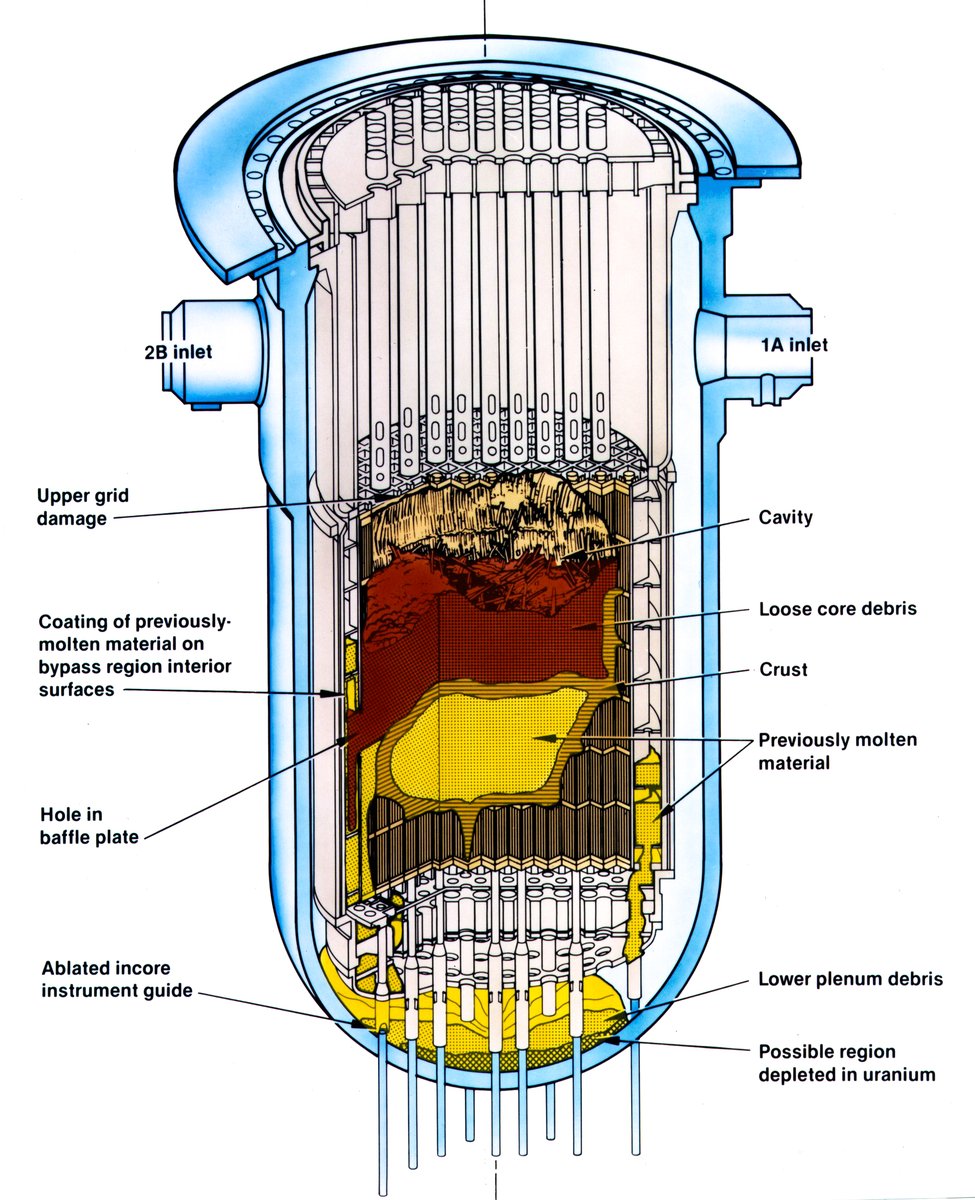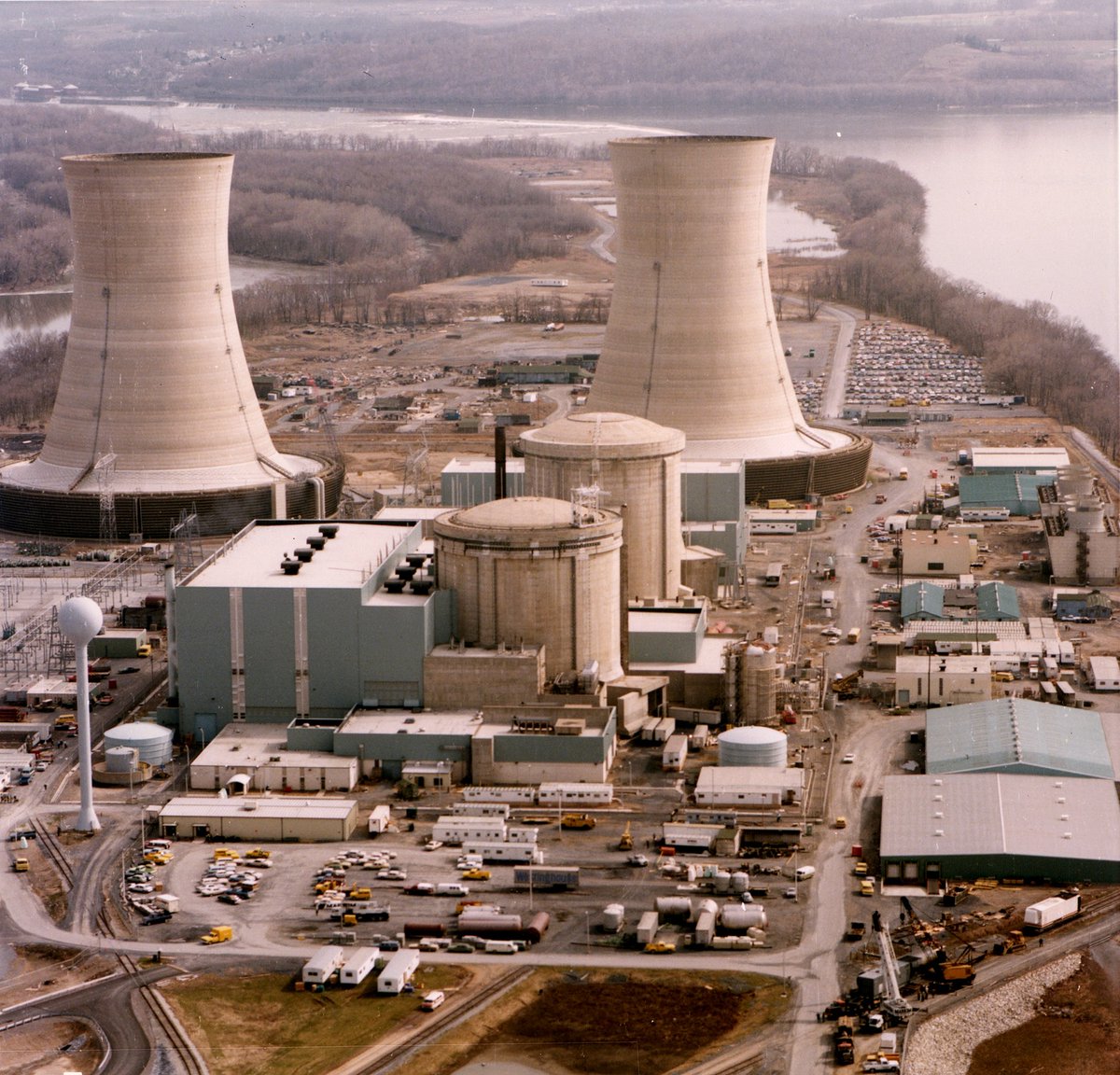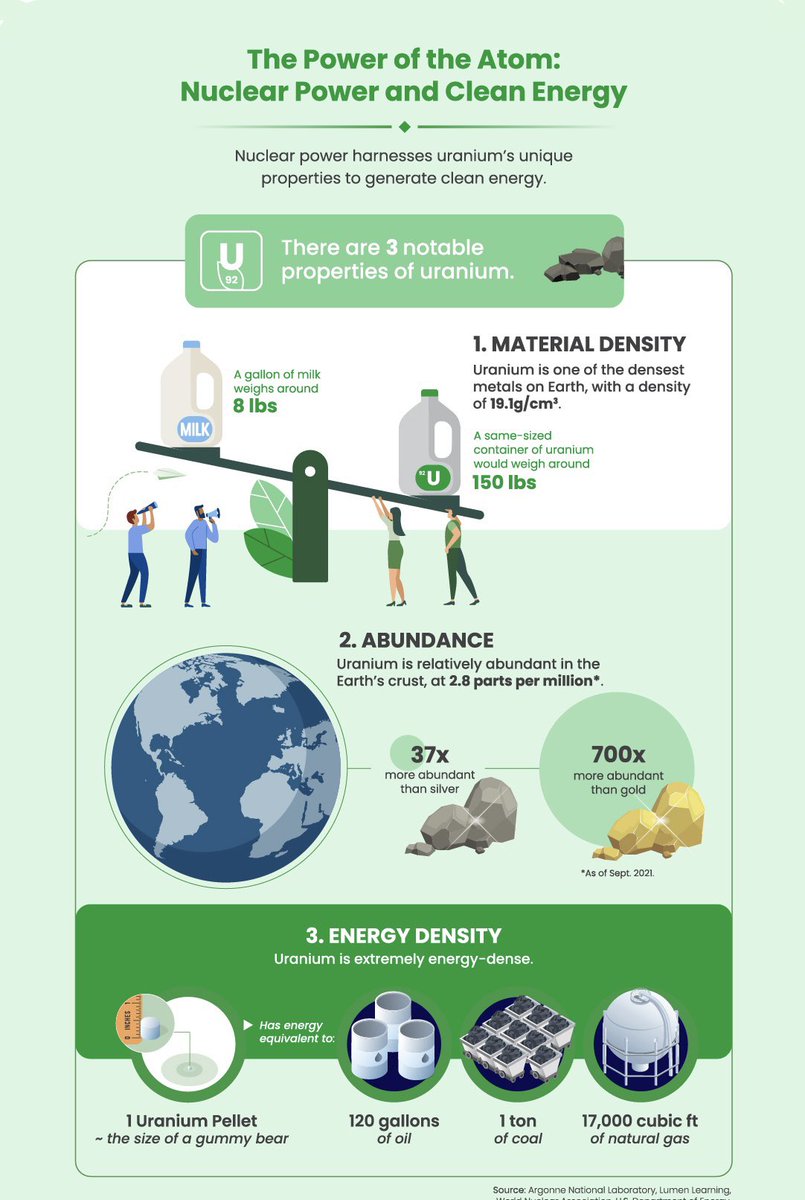
Debunking 40 Myths about Nuclear Energy.
Written by @OperadorNuclear (Engineer, Senior Reactor Operator and Nuclear Power Plant Shift Manager), and reviewed by @JosepRey_ @maesetote
Written by @OperadorNuclear (Engineer, Senior Reactor Operator and Nuclear Power Plant Shift Manager), and reviewed by @JosepRey_ @maesetote

☢️ Myth #1: “A nuclear power plant can explode like an atomic bomb”
✅ Fact: Natural Uranium contains 0.7% of the U-235 isotope, suitable for fission. A nuclear plant needs a proportion (enrichment) in the order of 4-5%. An atomic bomb needs a 90%. Source: @WorldNuclear
✅ Fact: Natural Uranium contains 0.7% of the U-235 isotope, suitable for fission. A nuclear plant needs a proportion (enrichment) in the order of 4-5%. An atomic bomb needs a 90%. Source: @WorldNuclear

☢️ Myth #2: “Nuclear power plants dump their waste to the ocean”
✅ Fact: Between 1940-1982, low and medium level waste from military and civilian reactors, and few high activity waste from former USSR nuclear submarines was thrown into the ocean. goo.gl/4AAEwA

✅ Fact: Between 1940-1982, low and medium level waste from military and civilian reactors, and few high activity waste from former USSR nuclear submarines was thrown into the ocean. goo.gl/4AAEwA


☢️ Myth #3: “Nuclear energy causes more deaths than any other energy source”
✅ Fact: Nuclear power is the safest energy source in terms of deaths per unit of energy generated, considering nuclear, industrial and accidents at work. valuewalk.com/2018/05/safest…
✅ Fact: Nuclear power is the safest energy source in terms of deaths per unit of energy generated, considering nuclear, industrial and accidents at work. valuewalk.com/2018/05/safest…

☢️ Myth #4: “Risk of cancer increases in the vicinity of nuclear power plants”
✅ Fact: Study after study shows no increase of cancer incidence around nuclear power plants. Committee on Medical Aspects of Radiation in the Environment (COMARE): assets.publishing.service.gov.uk/government/upl…
✅ Fact: Study after study shows no increase of cancer incidence around nuclear power plants. Committee on Medical Aspects of Radiation in the Environment (COMARE): assets.publishing.service.gov.uk/government/upl…

☢️ Myth #5: “Man-made radiation differs from natural radiation”
✅ Fact: Radiation emitted from man-made radionuclides is exactly the same as from radiation emitted from naturaly-occurring radioactive materials (alpha, beta or gamma radiation). goo.gl/nwDsHa
✅ Fact: Radiation emitted from man-made radionuclides is exactly the same as from radiation emitted from naturaly-occurring radioactive materials (alpha, beta or gamma radiation). goo.gl/nwDsHa

☢️ Myth #6: “Nuclear power is an excuse for making bombs”
✅ Fact: In a historical analysis of the relationship between nuclear energy programs and proliferation from 1954 to 2000, this study finds that the link between the two has been overstated: sciencedaily.com/releases/2017/…
✅ Fact: In a historical analysis of the relationship between nuclear energy programs and proliferation from 1954 to 2000, this study finds that the link between the two has been overstated: sciencedaily.com/releases/2017/…

☢️ Myth #7: “The Chernobyl accident could happen in any nuclear plant”
✅ Fact: An accident like the Chernobyl one cannot happen in modern nuclear power plants, as I demonstrate in the following thread with multiple arguments (in Spanish):
✅ Fact: An accident like the Chernobyl one cannot happen in modern nuclear power plants, as I demonstrate in the following thread with multiple arguments (in Spanish):
External Tweet loading...
If nothing shows, it may have been deleted
by @OperadorNuclear view original on Twitter
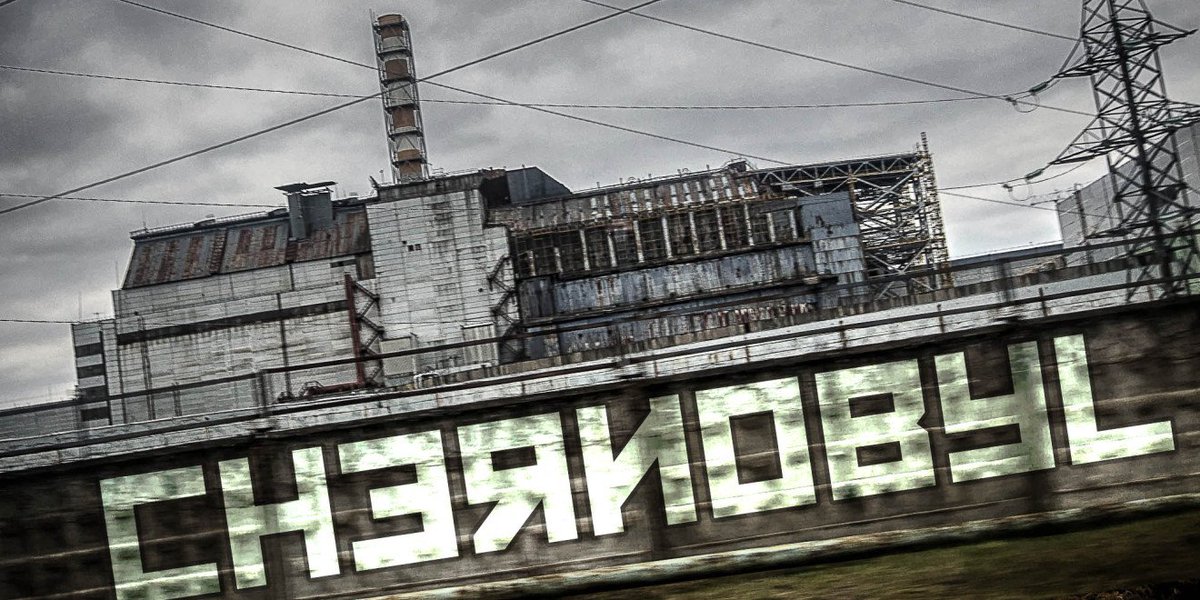
☢️ Myth #8: “The Fukushima nuclear disaster caused thousands of deaths”
✅ Fact: The accident had serious economic and environmental consequences, and caused the traumatic evacuation of thousands of people, but caused no radiation-related deaths. goo.gl/PJsKWE
✅ Fact: The accident had serious economic and environmental consequences, and caused the traumatic evacuation of thousands of people, but caused no radiation-related deaths. goo.gl/PJsKWE

☢️ Myth #9: “Nuclear energy needs huge mineral supply”
✅ Fact: Nuclear’s material requirements per energy produced, and thus its mining waste, are considerably much lower than most other energy forms. scientificamerican.com/article/renewa…
✅ Fact: Nuclear’s material requirements per energy produced, and thus its mining waste, are considerably much lower than most other energy forms. scientificamerican.com/article/renewa…

☢️ Myth #10: “The China syndrome” en.wikipedia.org/wiki/China_Syn…
✅ Fact: The molten core (corium) from a rugged reactor would fall on a cavity where would cool. Even if it went through it would cool down way before reaching the mantle, and if it did it would dilute.
✅ Fact: The molten core (corium) from a rugged reactor would fall on a cavity where would cool. Even if it went through it would cool down way before reaching the mantle, and if it did it would dilute.

☢️ Myth #11: “Nuclear waste has to be guarded and generates expenses for 10,000 yr”
✅ Fact: A facility for final disposal of spent nuclear fuel is designed so that the barriers, after closure of the repository, provide the requisite safety without monitoring and maintenance.
✅ Fact: A facility for final disposal of spent nuclear fuel is designed so that the barriers, after closure of the repository, provide the requisite safety without monitoring and maintenance.

☢️ Myth #12: “The accident of Three Mile Island caused health effects”
✅ Fact: There is no evidence that the accident harmed a single person or had any negative effect on the environment. More than a dozen health studies have found no effect on the people or the environment.
✅ Fact: There is no evidence that the accident harmed a single person or had any negative effect on the environment. More than a dozen health studies have found no effect on the people or the environment.

☢️ Myth #13: “Terrorists can use commercial reactor fuel to make nuclear weapons”
✅ Fact: It is impossible to make a nuclear weapon with low-enriched uranium. Reprocessing requires a very large industrial complex far beyond the capability of any terrorist organization.
✅ Fact: It is impossible to make a nuclear weapon with low-enriched uranium. Reprocessing requires a very large industrial complex far beyond the capability of any terrorist organization.

☢️ Myth #14: “Nuclear fuel is glowing neon green”
✅ Fact: Nuclear fuel is a ceramic and compact solid, chemical inert and insoluble, and black colored. Irradiated nuclear fuel glow blue by Cherenkov radiation.


✅ Fact: Nuclear fuel is a ceramic and compact solid, chemical inert and insoluble, and black colored. Irradiated nuclear fuel glow blue by Cherenkov radiation.



☢️ Myth #15: “Potassium iodide pills are distributed to people tot protect him from radiation”
✅ Fact: Taking potassium iodide at the beginning of exposure to radioactive iodine blocks the uptake of any iodine by the thyroid gland, but do not protect from external radiation.
✅ Fact: Taking potassium iodide at the beginning of exposure to radioactive iodine blocks the uptake of any iodine by the thyroid gland, but do not protect from external radiation.

☢️ Myth #16: “Nuclear plants cause three-eyed fishes”
✅ Fact: In 2002, Spanish environmental organization @ecologistas recognized they lied when announced they found a fish with serious genetic alterations nearby Garoña Nuclear Power Plant. elmundo.es/elmundo/2002/0…
✅ Fact: In 2002, Spanish environmental organization @ecologistas recognized they lied when announced they found a fish with serious genetic alterations nearby Garoña Nuclear Power Plant. elmundo.es/elmundo/2002/0…

☢️ Myth #17: “Nuclear plants can’t ramp enough to accommodate renewables”
✅ Fact: Generation II French and German nuclear plants, and Gen III power plants can follow load, and many other power plants would be able to do it with a minor design upgrade. oecd-nea.org/ndd/reports/20…
✅ Fact: Generation II French and German nuclear plants, and Gen III power plants can follow load, and many other power plants would be able to do it with a minor design upgrade. oecd-nea.org/ndd/reports/20…

☢️ Myth #18: “That cooling tower is a nuclear power plant”
✅ Fact: Cooling towers are conventional equipment also used by coal-fired (photo) and gas-fired power plants, and other industries. They have no safety role to play in preventing or mitigating nuclear accidents.
✅ Fact: Cooling towers are conventional equipment also used by coal-fired (photo) and gas-fired power plants, and other industries. They have no safety role to play in preventing or mitigating nuclear accidents.

☢️ Myth #19: “Cooling towers emit smoke”
✅ Fact: Cooling towers only emit clean water vapor that results from the cooling process. It contains no pollutants, and it is not radioactive.
✅ Fact: Cooling towers only emit clean water vapor that results from the cooling process. It contains no pollutants, and it is not radioactive.

☢️ Myth #20: “There is no solution for the disposal of spent nuclear fuel”
✅ Fact: There is a worldwide consensus amongst technical experts that properly established deep geological disposal is an entirely appropriate management approach for spent fuel goo.gl/wq2m7u


✅ Fact: There is a worldwide consensus amongst technical experts that properly established deep geological disposal is an entirely appropriate management approach for spent fuel goo.gl/wq2m7u



☢️ Myth #21: “Spent nuclear fuel is a waste”
✅ Fact: Used fuel may be processed to recover fissile and fertile materials in order to provide fresh fuel for existing and future nuclear power plants. goo.gl/JpHQ3i
✅ Fact: Used fuel may be processed to recover fissile and fertile materials in order to provide fresh fuel for existing and future nuclear power plants. goo.gl/JpHQ3i

☢️ Myth #22: “Nuclear plants heat up water too much in rivers, altering the environment”
✅ Fact: The temperature difference between the inlet and outlet of cooling water from the river or lake is limited to 3ºC, and are used cooling towers in order to not exceed it.
✅ Fact: The temperature difference between the inlet and outlet of cooling water from the river or lake is limited to 3ºC, and are used cooling towers in order to not exceed it.

☢️ Myth #23: “Operators in nuclear plants are just like Homer Simpson”
✅ Fact: Operators in Spanish NPP are engineers with 3 years of specific training and 4 weeks per year of training in a simulator. Applicants must score an 80% or better. NRC: nrc.gov/reactors/opera…

✅ Fact: Operators in Spanish NPP are engineers with 3 years of specific training and 4 weeks per year of training in a simulator. Applicants must score an 80% or better. NRC: nrc.gov/reactors/opera…


☢️ Myth 24: “Nuclear power plants must close when they reach 40 years”
✅ Fact: About 90% of US plants have already renewed their licenses extending their operation to 60 years. A subsequent renewal could extends plants operation from 60 to 80 years. iaea.org/newscenter/new…
✅ Fact: About 90% of US plants have already renewed their licenses extending their operation to 60 years. A subsequent renewal could extends plants operation from 60 to 80 years. iaea.org/newscenter/new…

☢️ Myth #25: “High activity nuclear waste can filter to aquifers”
✅ Fact: Used fuel is a solid ceramic, chemically inert and insoluble in water. After five years in a cooling pool, it is transferred to concrete and steel containers called dry casks with passive cooling.
✅ Fact: Used fuel is a solid ceramic, chemically inert and insoluble in water. After five years in a cooling pool, it is transferred to concrete and steel containers called dry casks with passive cooling.

☢️ Myth #26: “Nuclear power is in regression worldwide”
✅ Fact: 451 operable reactors, 58 under construction, 157 ordered or planned, and 333 proposed. Furthermore, new reactor technologies, such a small modular reactors (SMRs) are under development. iaea.org/pris/

✅ Fact: 451 operable reactors, 58 under construction, 157 ordered or planned, and 333 proposed. Furthermore, new reactor technologies, such a small modular reactors (SMRs) are under development. iaea.org/pris/


☢️ Myth #27: “If you fall in a spent fuel pool, you die”
✅ Fact: The water in the spent fuel pools is slightly radioactive but not very dangerous. A fall implies contamination that is eliminated with a shower. In case of ingestion, treatment is more laborious, but effective.
✅ Fact: The water in the spent fuel pools is slightly radioactive but not very dangerous. A fall implies contamination that is eliminated with a shower. In case of ingestion, treatment is more laborious, but effective.

☢️ Myth #28: “Nuclear plants generate enormous quantities of waste annually”
✅ Fact: A 1,000 MW (1 GW) reactor generate each year about 50 cubic meters of low and medium level waste, and 9 cubic meters of high activity (used fuel) waste.
✅ Fact: A 1,000 MW (1 GW) reactor generate each year about 50 cubic meters of low and medium level waste, and 9 cubic meters of high activity (used fuel) waste.
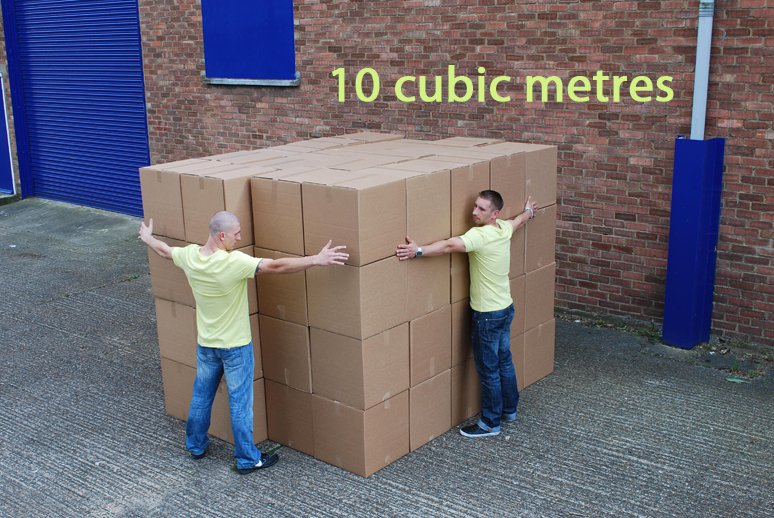
☢️ Myth #29: “Nuclear plants pollute the environment”
✅ Fact: If by polluting we mean degrading the environment with hazardous substances: NPP don’t emit solid waste, emit only treated noble gases and liquid effluents, and only diesel generators test (1h/month) do pollute.
✅ Fact: If by polluting we mean degrading the environment with hazardous substances: NPP don’t emit solid waste, emit only treated noble gases and liquid effluents, and only diesel generators test (1h/month) do pollute.

☢️ Myth #30: “Nuclear plants emit more CO₂ than renewable”
✅ Fact: According to the Intergovernmental Panel on Climate Change of the United Nations @IPCC_CH, CO₂ emissions from the full nuclear cycle are equivalent to those from renewables ipcc.ch/pdf/assessment…
✅ Fact: According to the Intergovernmental Panel on Climate Change of the United Nations @IPCC_CH, CO₂ emissions from the full nuclear cycle are equivalent to those from renewables ipcc.ch/pdf/assessment…

☢️ Myth #31: “A deep geological repository won’t remain intact for 10,000 years”
✅ Fact: Scientific evidence shows that placed unaltered for millions of years do exist (we need 10,000) capable of containing radioactivity of that time. nwmo.ca/~/media/Site/F…
✅ Fact: Scientific evidence shows that placed unaltered for millions of years do exist (we need 10,000) capable of containing radioactivity of that time. nwmo.ca/~/media/Site/F…

☢️ Myth #32: “Uranium is running out”
✅ Fact:
1. Reasonably assured resources: 135 years.
2. Unidentified resources.
3. MOX from weapons and recycling.
4. Generation IV reactors will use 99% of fuel (now 5%).
5. Uranium from sea water.
6. Thorium, more abundant than Uranium.

✅ Fact:
1. Reasonably assured resources: 135 years.
2. Unidentified resources.
3. MOX from weapons and recycling.
4. Generation IV reactors will use 99% of fuel (now 5%).
5. Uranium from sea water.
6. Thorium, more abundant than Uranium.


☢️ Myth #33: “Renewables can supply 100% of our power, nuclear is doomed”
✅ Fact: Renewables are important but intermittent and cannot generate continuous electricity supply. Nuclear is the only low-carbon source of baseload electricity that can replace coal and natural gas.
✅ Fact: Renewables are important but intermittent and cannot generate continuous electricity supply. Nuclear is the only low-carbon source of baseload electricity that can replace coal and natural gas.

☢️ Myth #34: “Nuclear plants take more than a decade to build”
✅ Fact: It is common to cite specific delays (Flamanville or Olkiluoto) to try to generalize. The median construction time for reactors grid-connected in 2016 was 74 months. world-nuclear.org/getmedia/b392d…
✅ Fact: It is common to cite specific delays (Flamanville or Olkiluoto) to try to generalize. The median construction time for reactors grid-connected in 2016 was 74 months. world-nuclear.org/getmedia/b392d…

☢️ Myth #35: “Baseload power is not necessary”
✅ Fact: Baseload power guarantees supply against renewable intermittencies and can only be supplied by thermal plants such gas and coal, and nuclear plants. The Myth of the Myth of Baseload: decarbonisesa.com/2014/09/14/the…
✅ Fact: Baseload power guarantees supply against renewable intermittencies and can only be supplied by thermal plants such gas and coal, and nuclear plants. The Myth of the Myth of Baseload: decarbonisesa.com/2014/09/14/the…

☢️ Myth #36: “Plutonium is the most dangerous material in the world”
✅ Fact: Plutonium is toxic and must be handed in a responsible manner. Plutonium inhalation would increase the probability of a cancer developing, whilst most other strong toxins lead to immediate death.
✅ Fact: Plutonium is toxic and must be handed in a responsible manner. Plutonium inhalation would increase the probability of a cancer developing, whilst most other strong toxins lead to immediate death.

☢️ Myth #37: “The transport of nuclear waste poses an unacceptable risk”
✅ Fact: At least 25,000 shipments of HLW have been made worldwide. Shipments have been executed virtually without incident and without any harmful radioactivity releases. nrc.gov/reading-rm/doc…

✅ Fact: At least 25,000 shipments of HLW have been made worldwide. Shipments have been executed virtually without incident and without any harmful radioactivity releases. nrc.gov/reading-rm/doc…


☢️ Myth #38: “Nuclear waste is hazardous 10,000 years and poses a huge threat to our future generations”
✅ Fact: Many industries produce hazardous and toxic waste. The radioactivity of nuclear waste naturally decays, other industrial wastes remain hazardous indefinitely.
✅ Fact: Many industries produce hazardous and toxic waste. The radioactivity of nuclear waste naturally decays, other industrial wastes remain hazardous indefinitely.

☢️ Myth #39: “Nobody knows the true costs of waste management”
✅ Fact: Most countries make estimates of the cost of disposal. Typically the spent fuel management represent about 10% of the total costs involved in producing electricity from a NPP. eea.europa.eu/data-and-maps/…
✅ Fact: Most countries make estimates of the cost of disposal. Typically the spent fuel management represent about 10% of the total costs involved in producing electricity from a NPP. eea.europa.eu/data-and-maps/…
☢️ Myth #40: “Nuclear reactors emit dangerous amounts of radiation”
✅ Fact: If you live within 75 km of a nuclear power plant, you receive an average radiation dose of about 0.0001 mSv/year. The total worldwide average effective dose from natural radiation is 2.4 mSv/year.
✅ Fact: If you live within 75 km of a nuclear power plant, you receive an average radiation dose of about 0.0001 mSv/year. The total worldwide average effective dose from natural radiation is 2.4 mSv/year.

• • •
Missing some Tweet in this thread? You can try to
force a refresh




